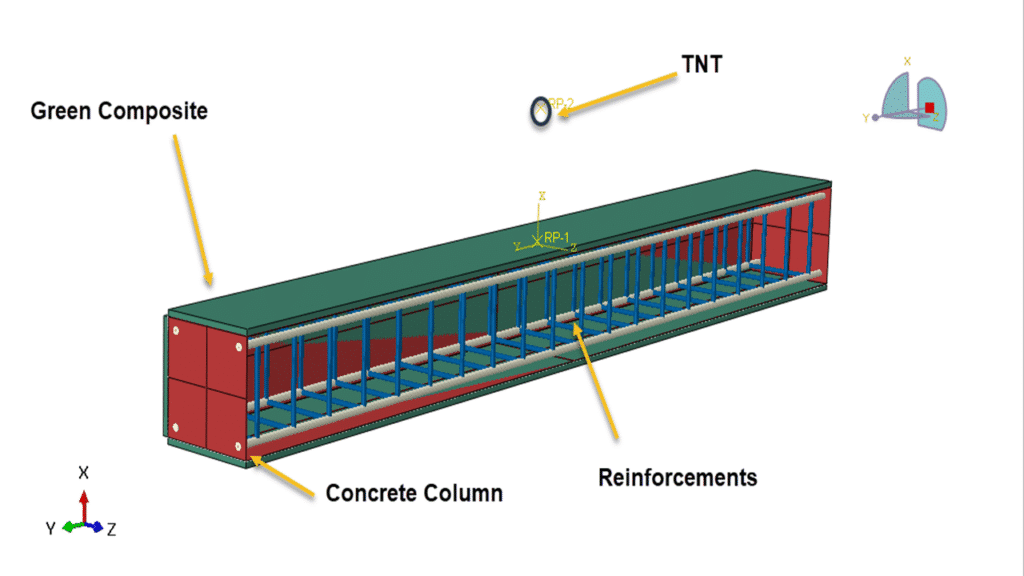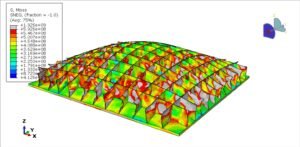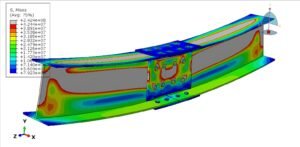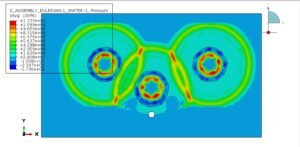





In this tutorial, the simulation of an air blast explosion over a rubberized concrete column reinforced with green composite in Abaqus is investigated. The rubberized concrete column is modeled as a three-dimensional solid part. The green composite, consisting of multiple layers, is modeled as a three-dimensional shell part. Steel reinforcements are defined as wire parts.
Reinforced concrete (RC) is widely used in construction, and its behavior under static loads is well understood. However, RC structures can also be subjected to unconventional loading, such as blast pressures from explosions. This has drawn increasing attention due to both accidental events (e.g., gas explosions) and intentional threats (e.g., terrorist attacks or conflict-zone blasts). Regardless of origin, explosions can cause severe structural damage and loss of life. Adding rubber waste to concrete helps absorb energy and balance internal stresses, enhancing resistance under dynamic loads.
The Concrete Damaged Plasticity (CDP) model is used to represent the behavior of the rubberized concrete column under blast loading. For the green composite, the lamina elasticity model combined with the Hashin damage criterion is employed to capture failure under severe loading. Steel reinforcements are modeled using an elastic-plastic material definition.
Due to the rapid deformation caused by the explosion, a Dynamic Explicit step is selected. Tie constraints are applied between the green composite and the concrete surface, and embedded region constraints are used for the steel reinforcements. The CONWEP air blast method is used to apply the explosive load, simulating a specific amount of TNT detonated near the column. Proper boundary conditions are applied to both ends of the column.
A fine mesh is used to ensure accurate and stable simulation results. After running the analysis, key results such as stress, strain, damage, failure, force, and displacement can be extracted and reviewed.


Abaqus
€68,00 €34,00

Abaqus
€77,00 €39,00

Abaqus
€79,00 €39,00

Abaqus
€75,00 €37,00

Abaqus
€76,00 €38,00

Abaqus
€79,00 €38,00
See more

Want to receive push notifications for all major on-site activities?